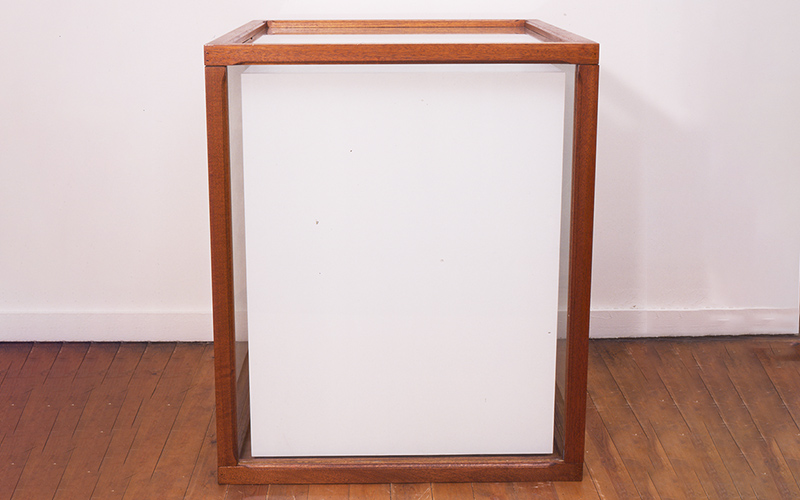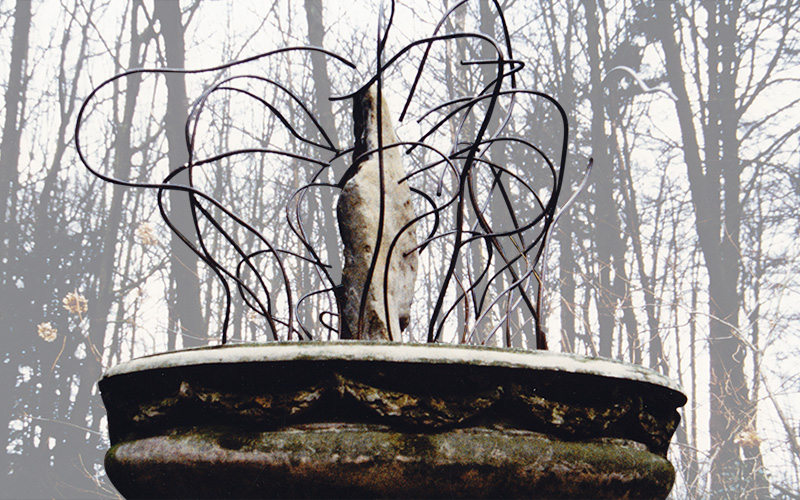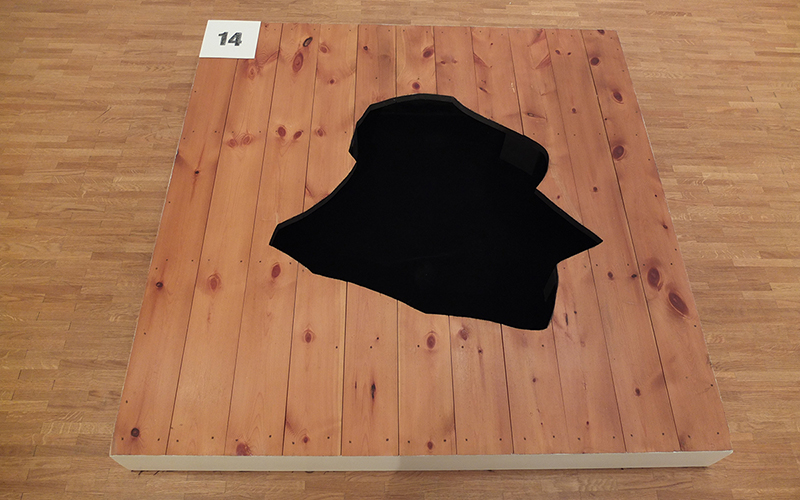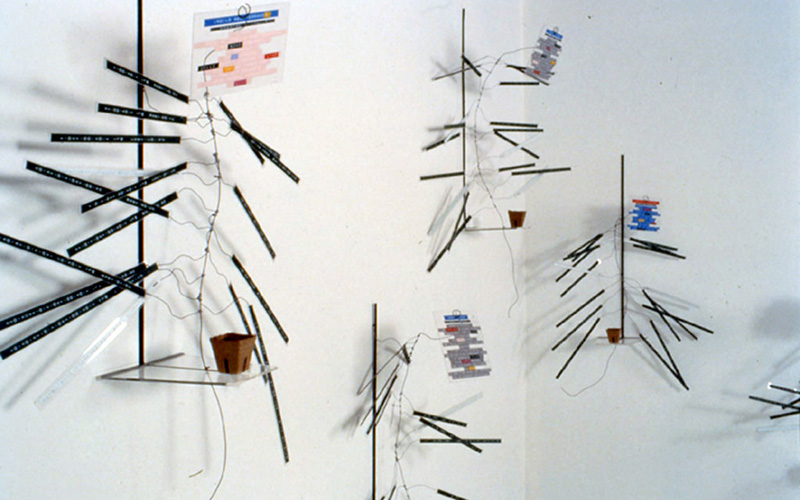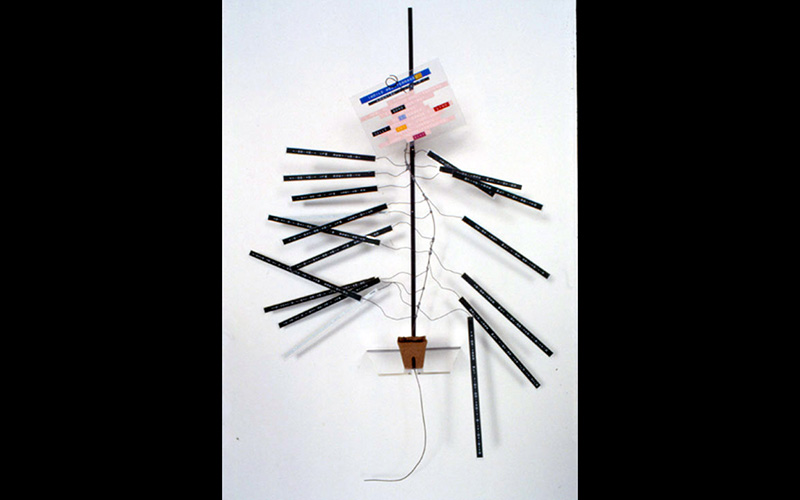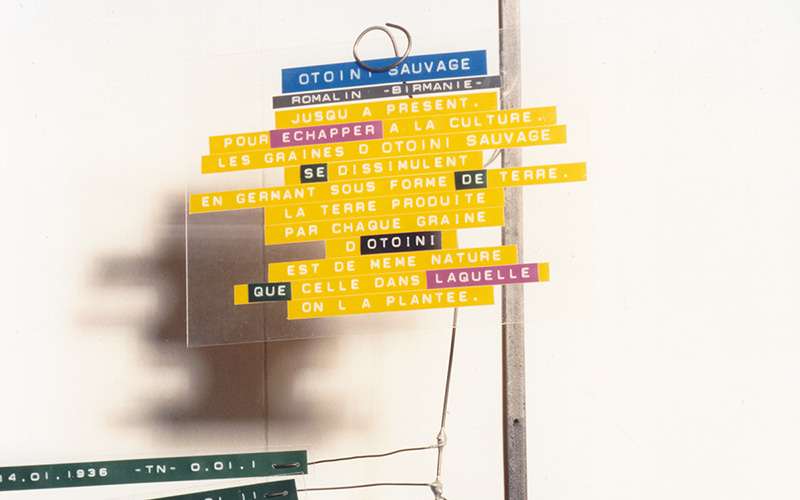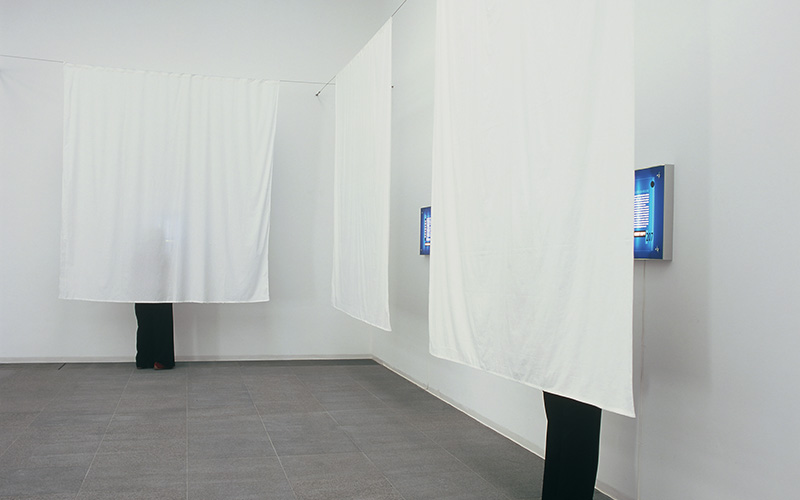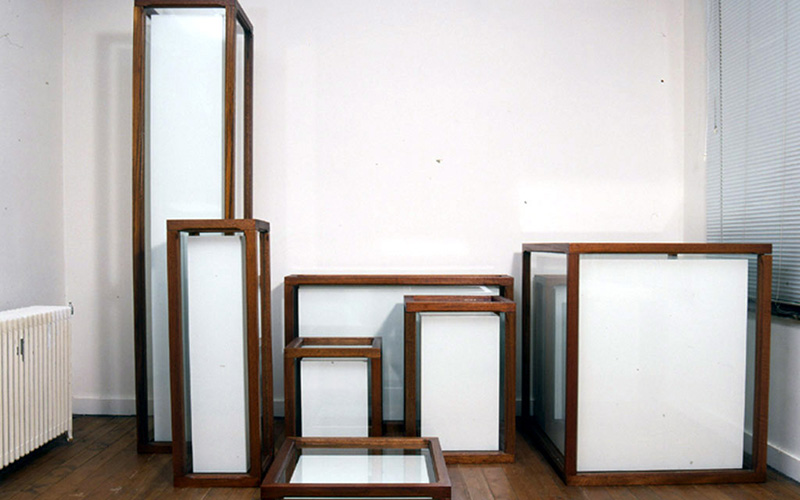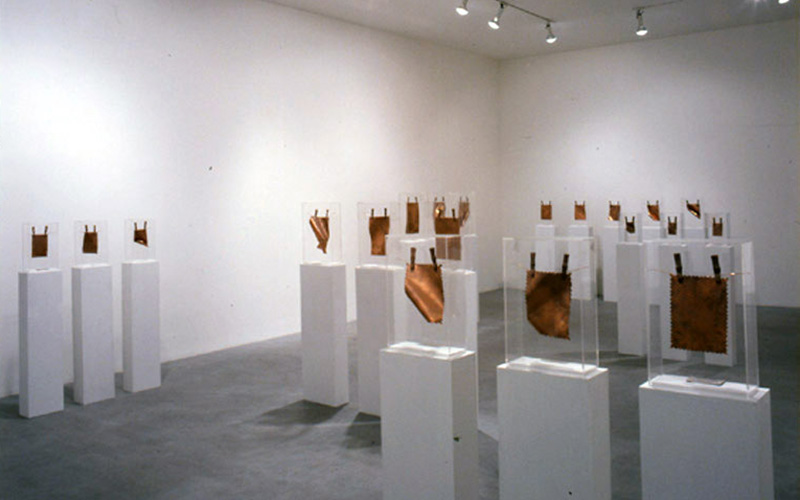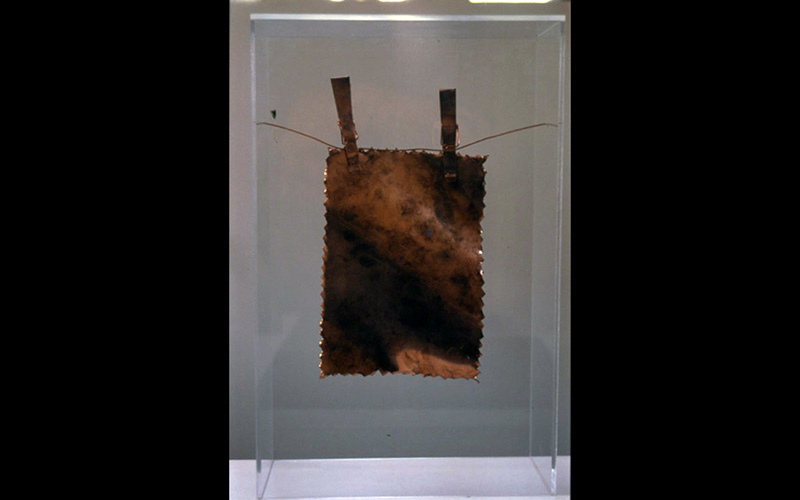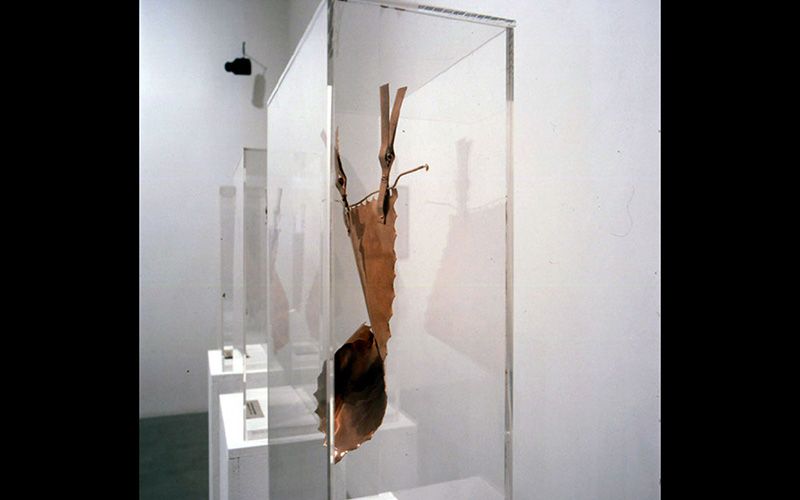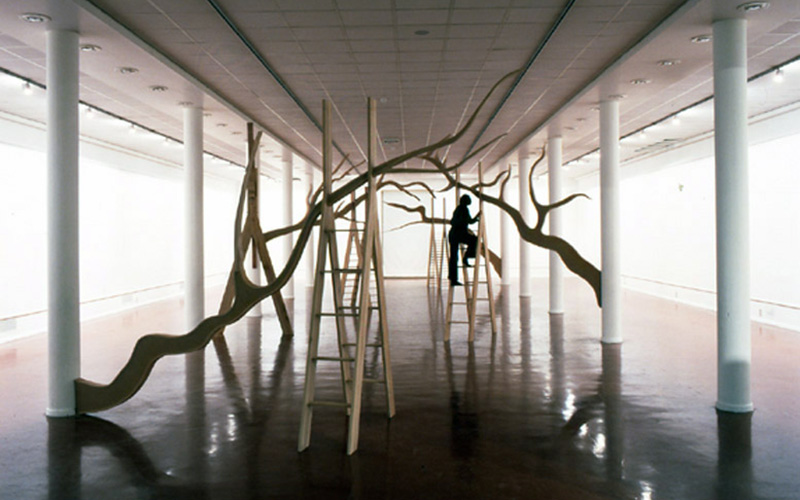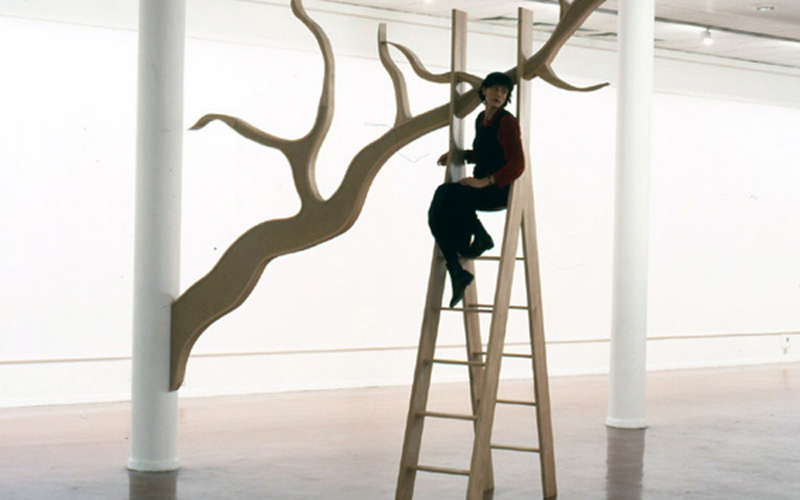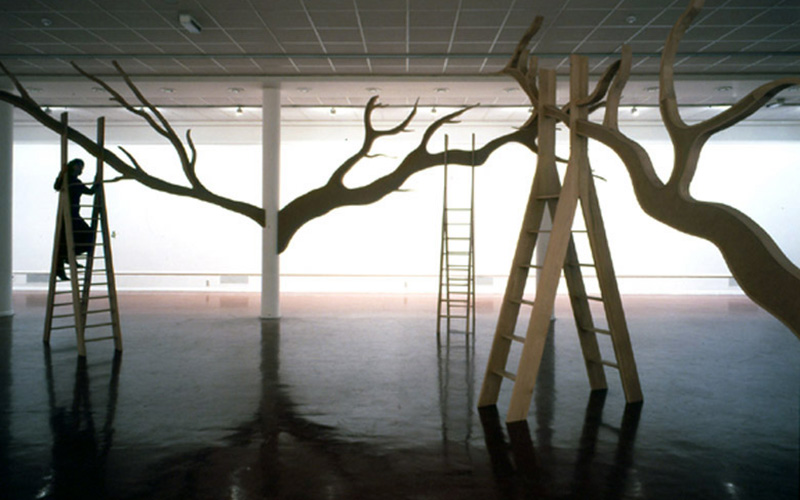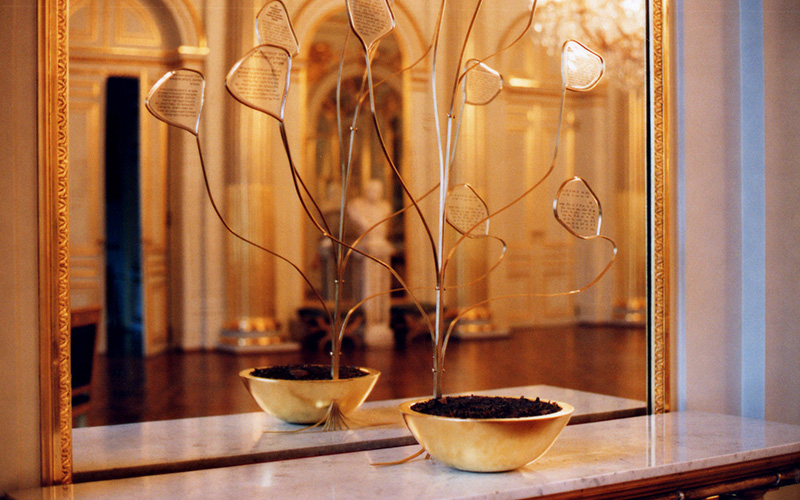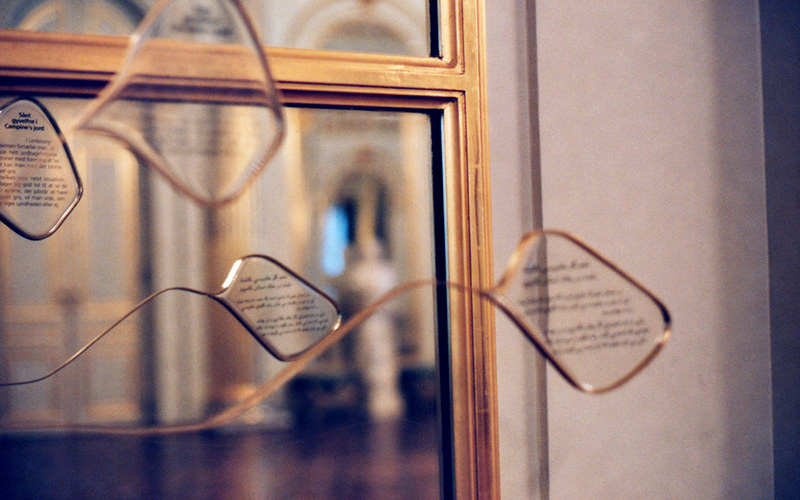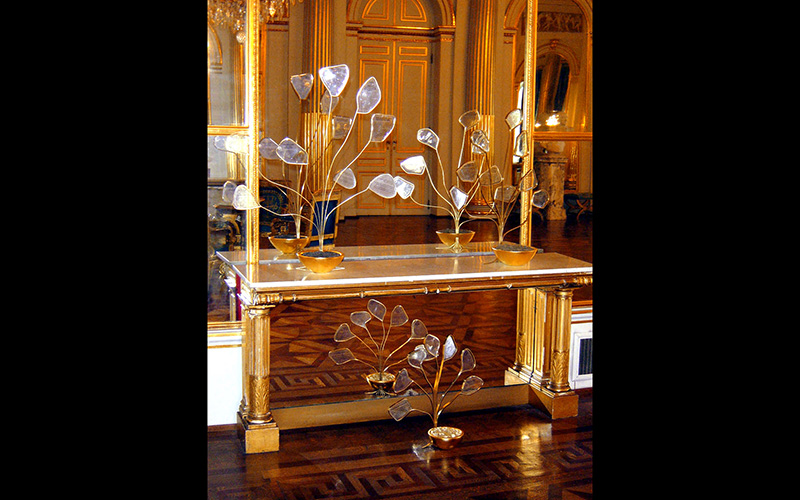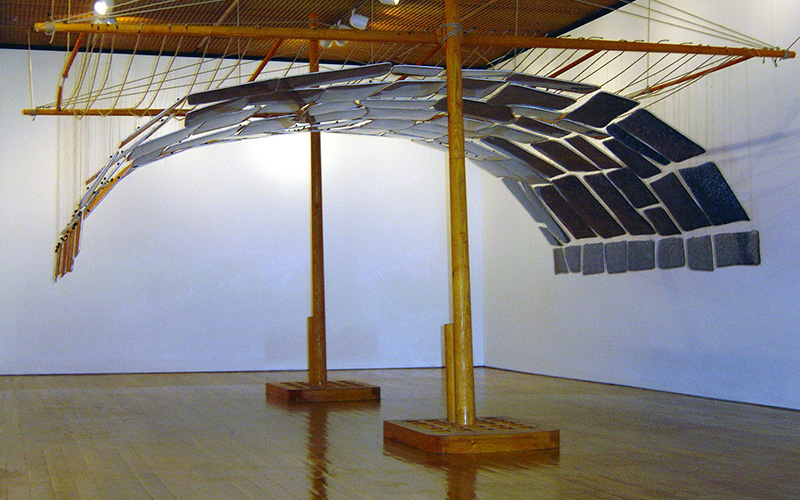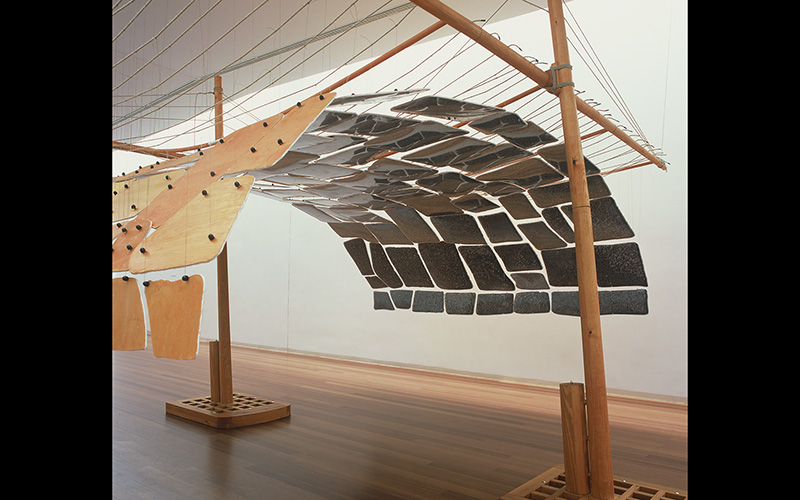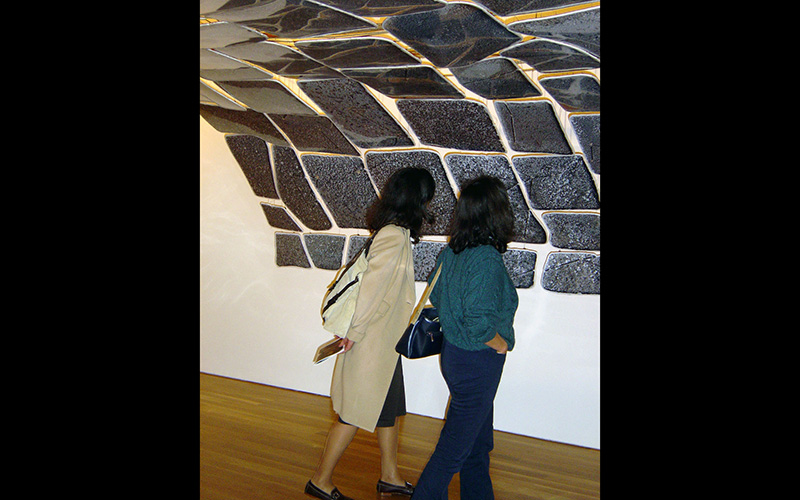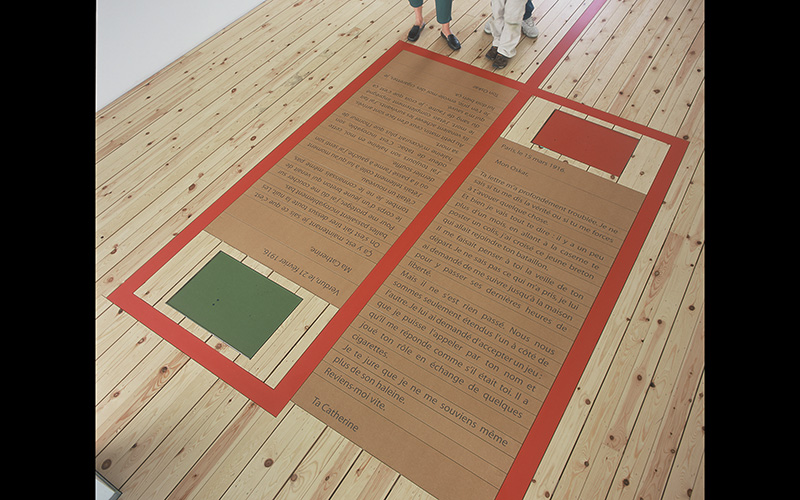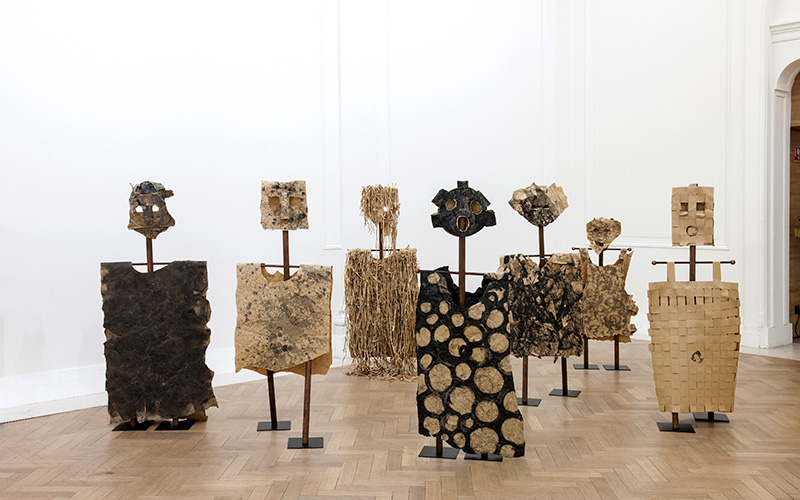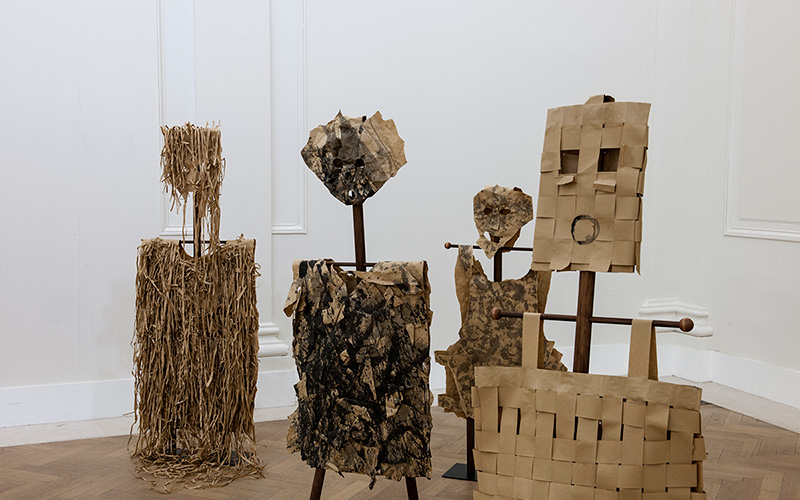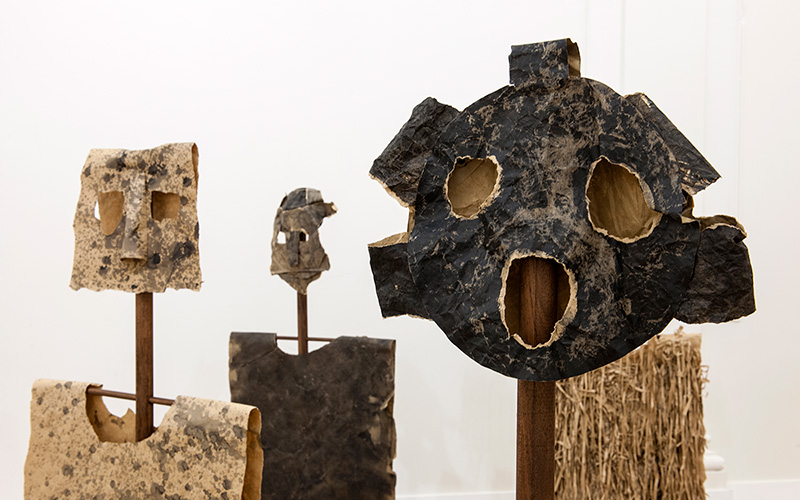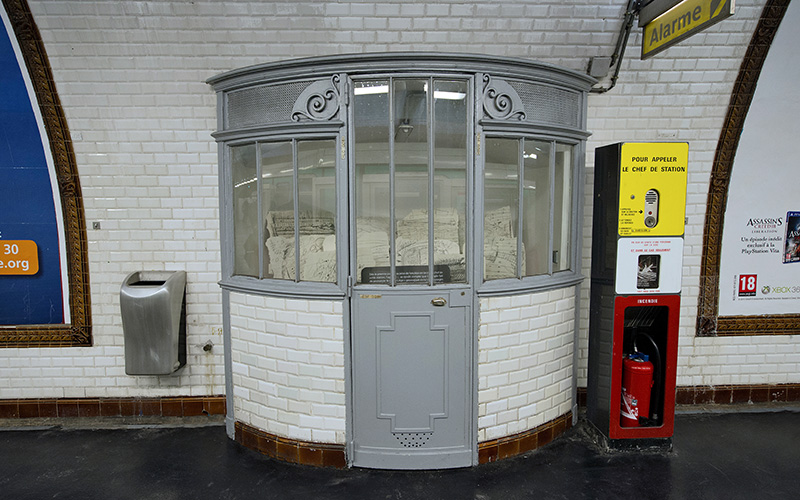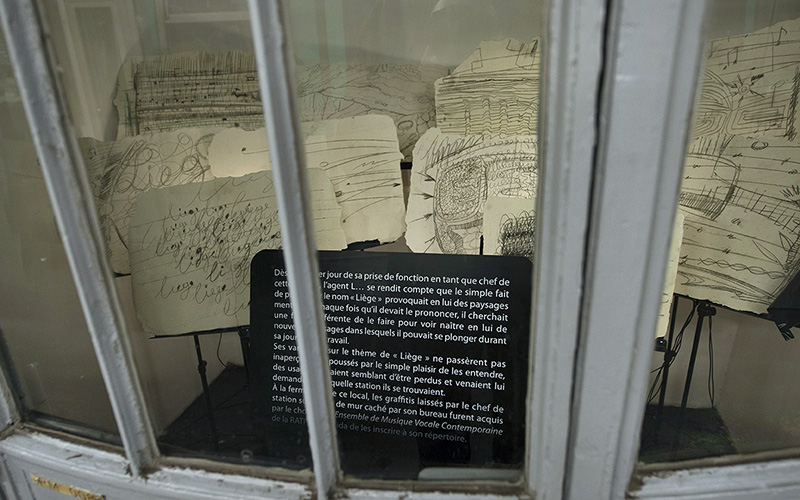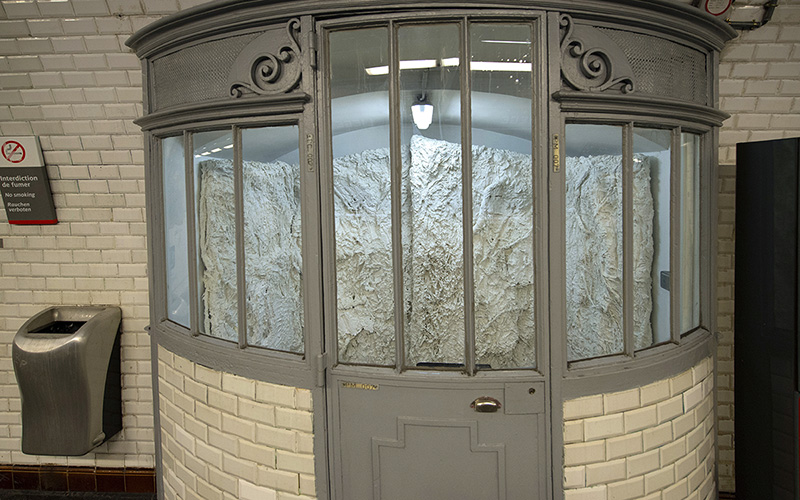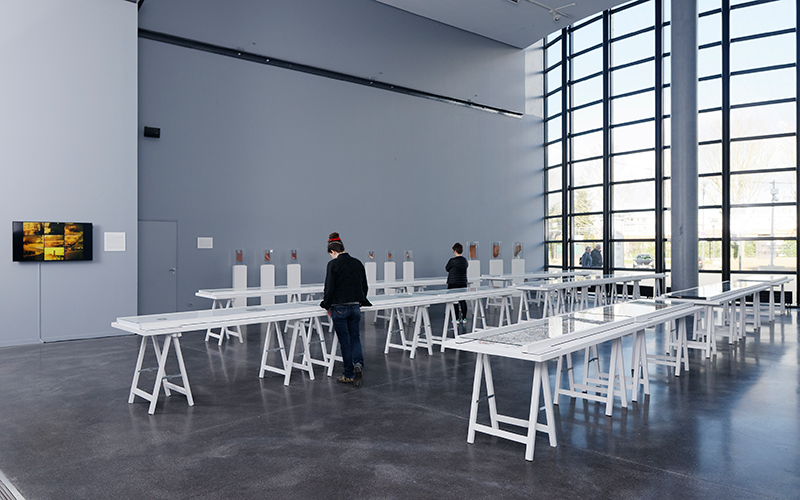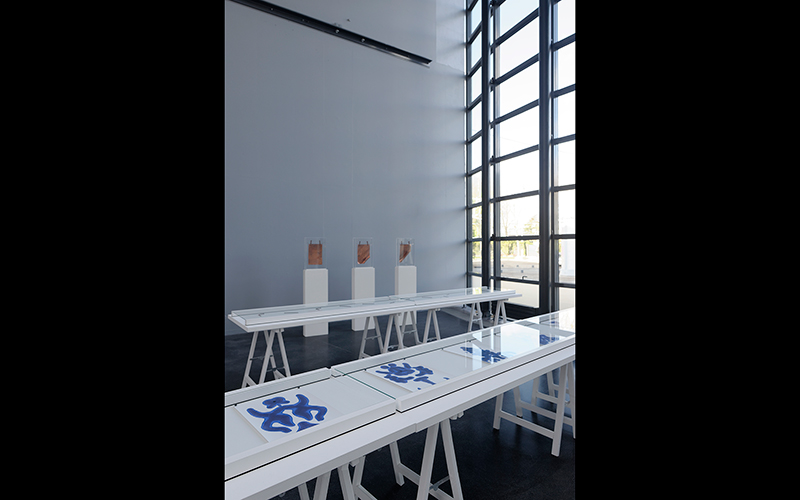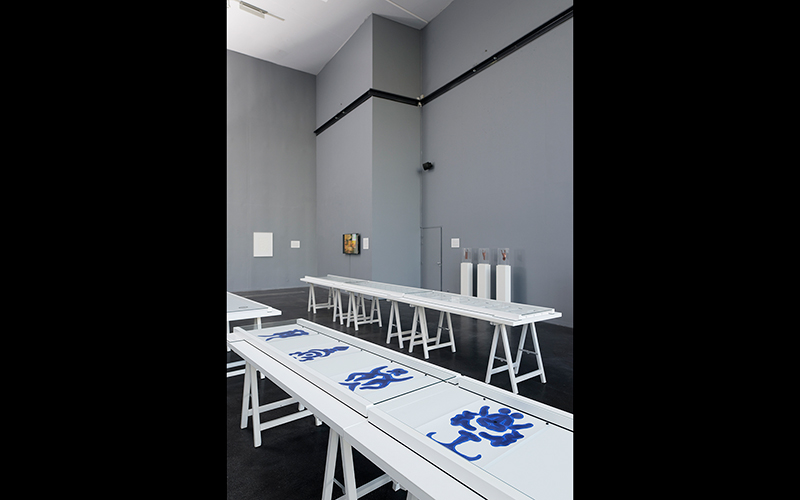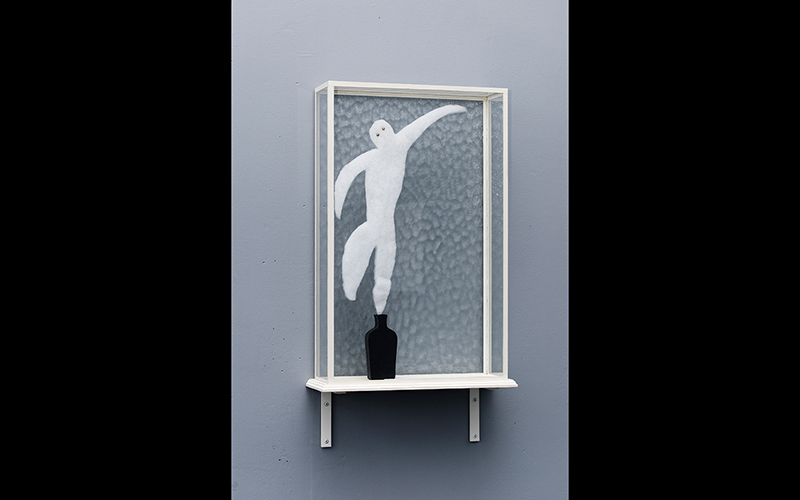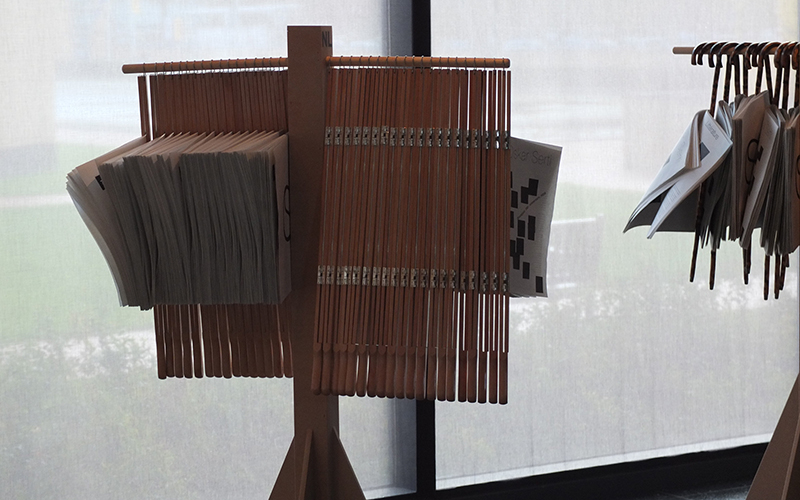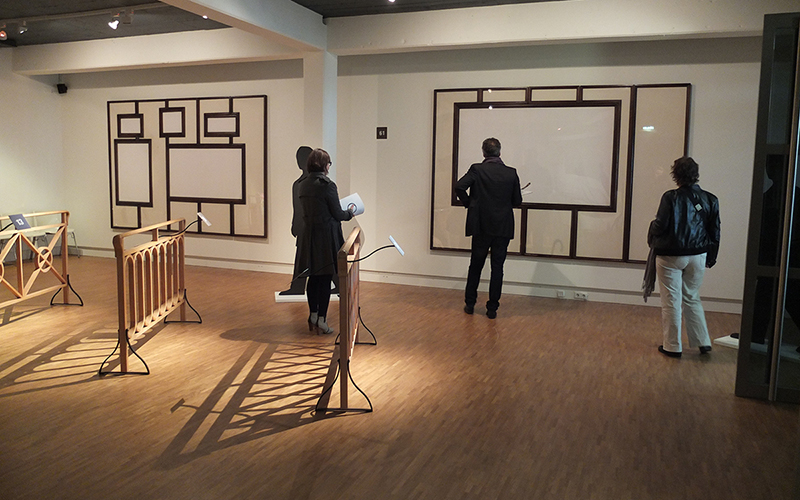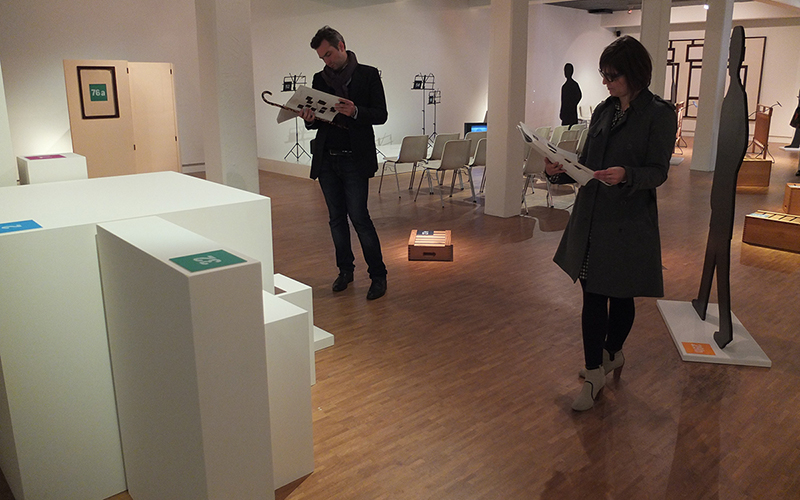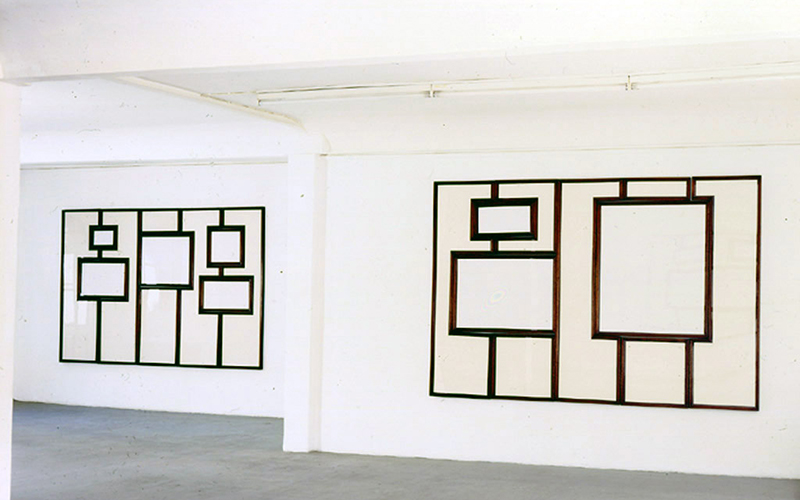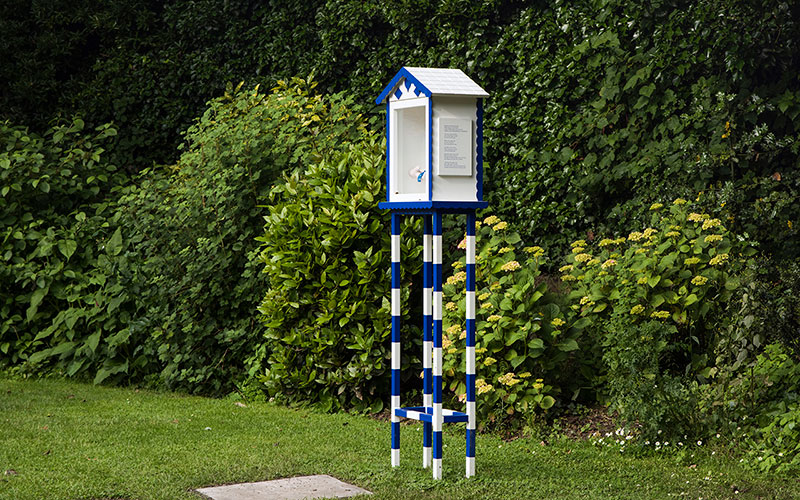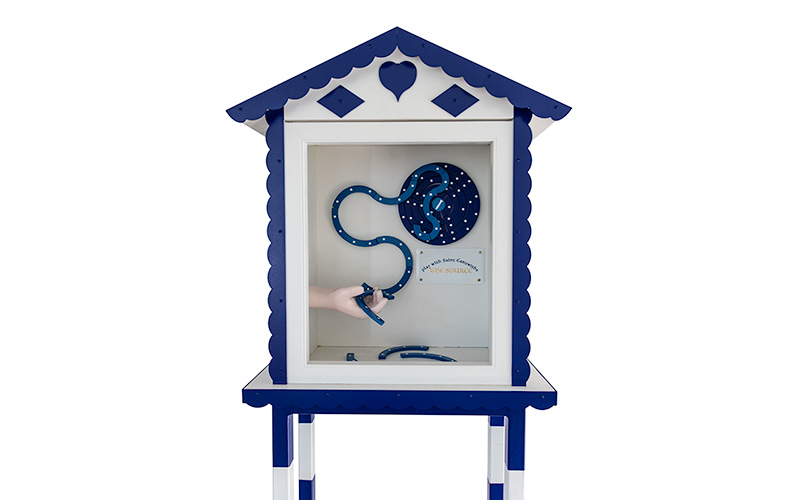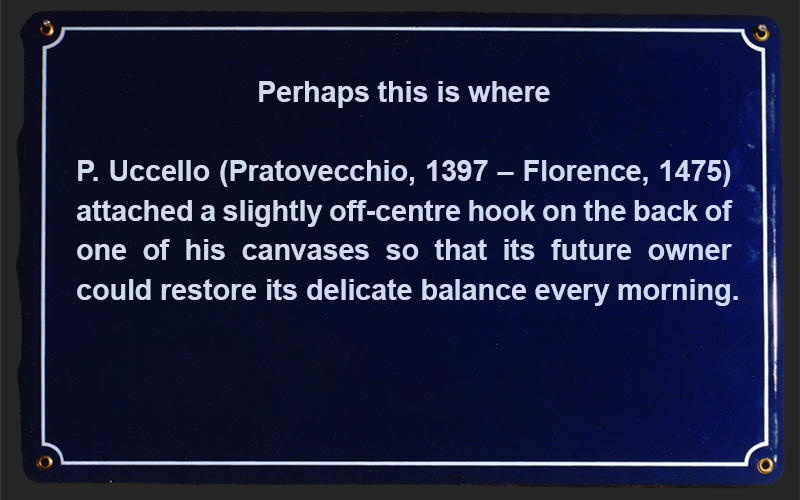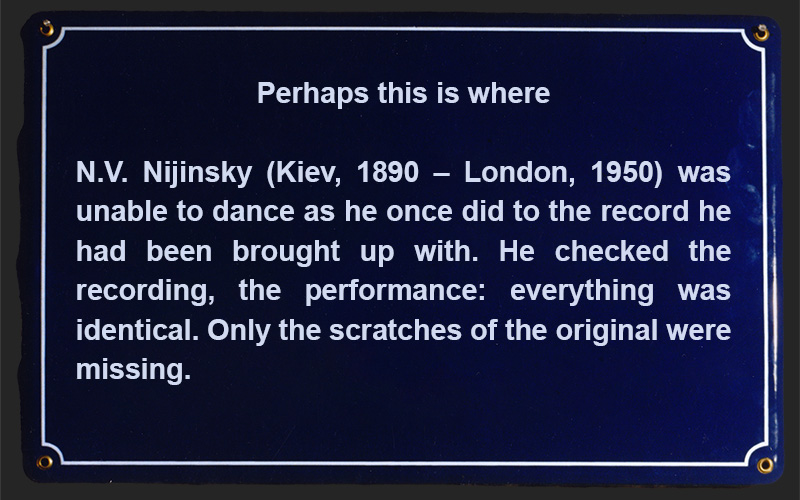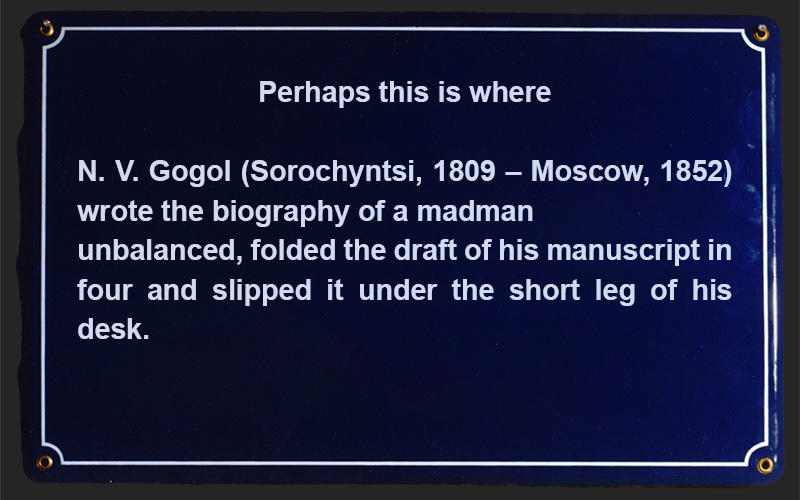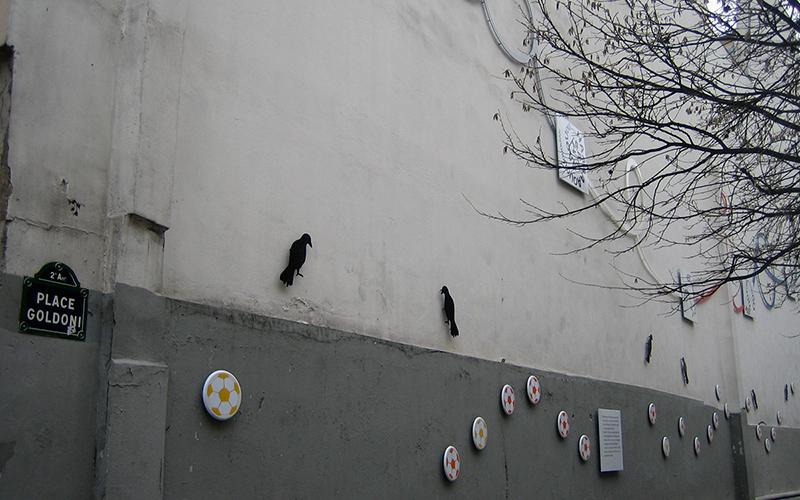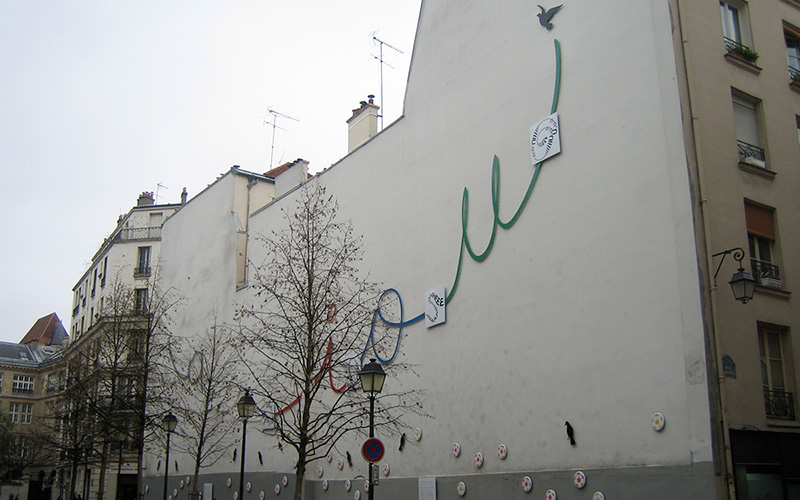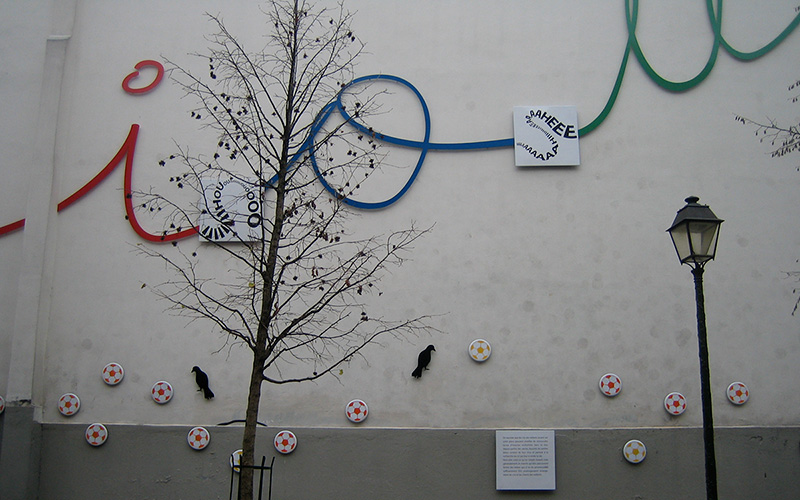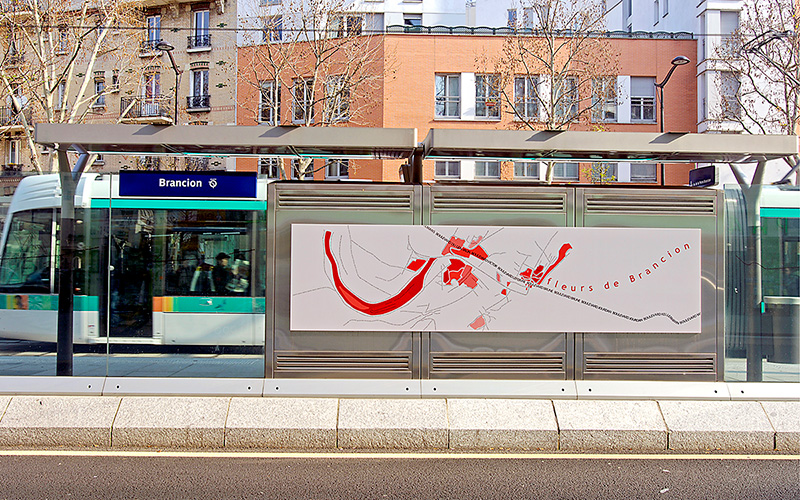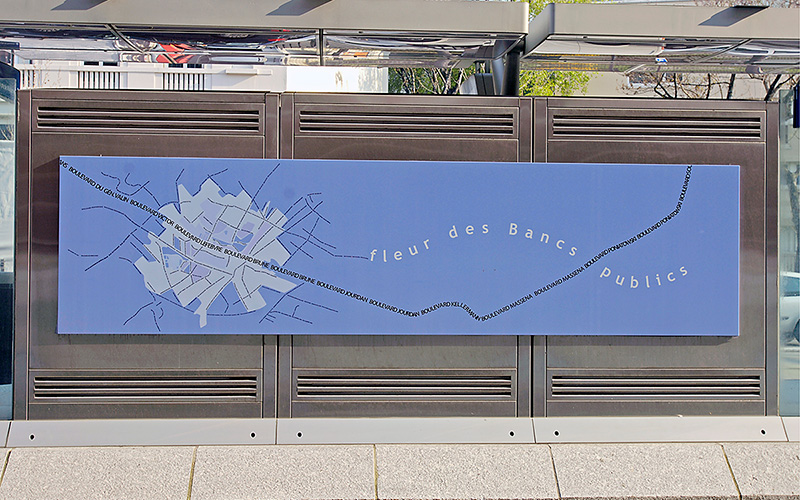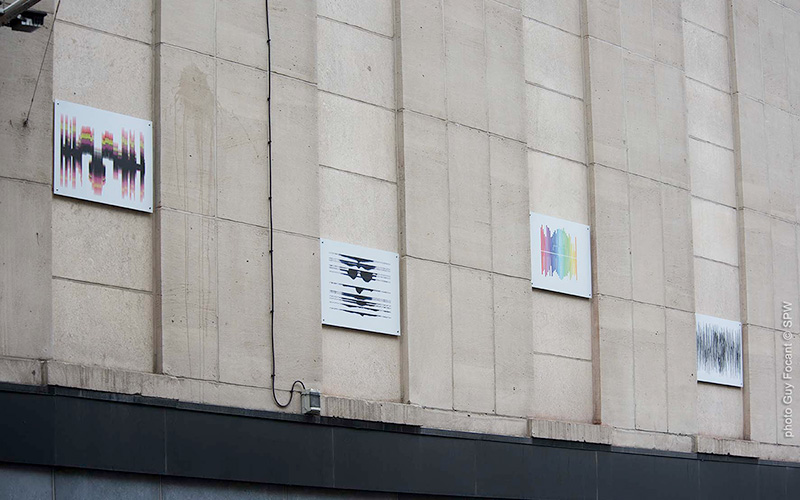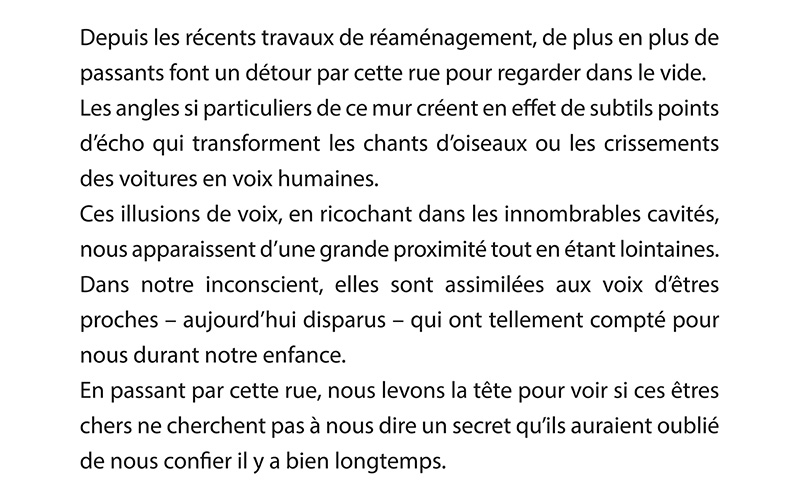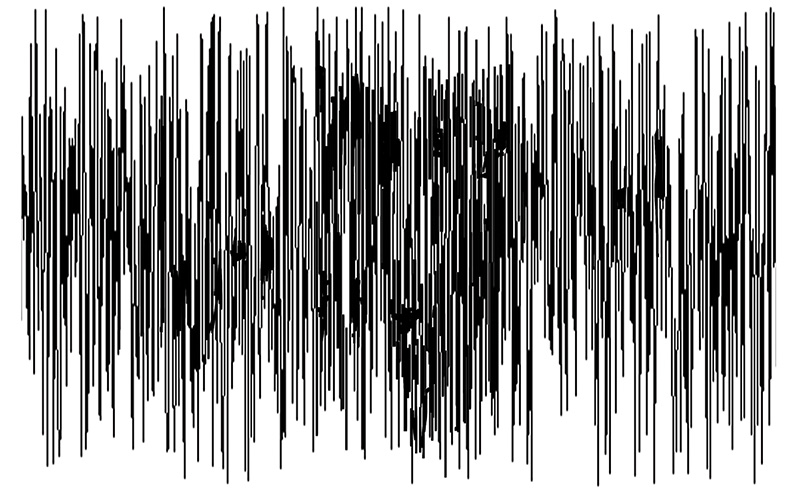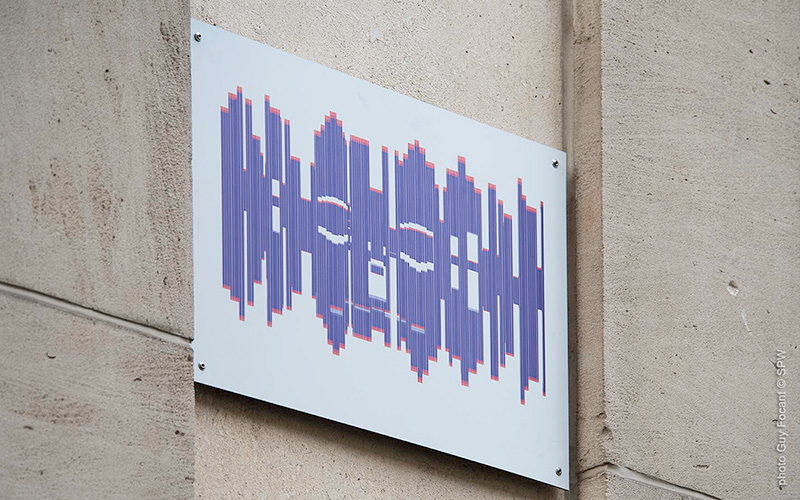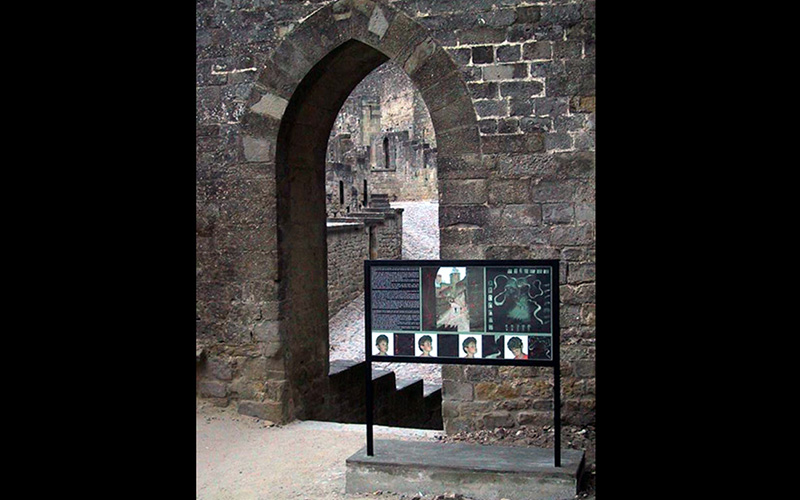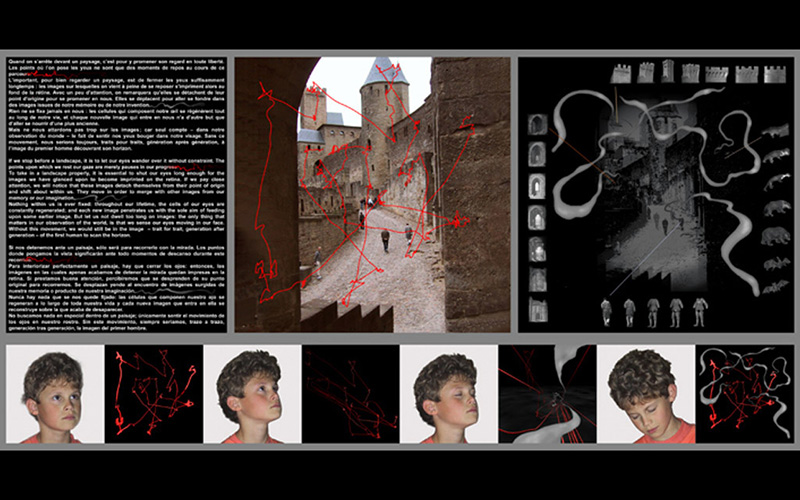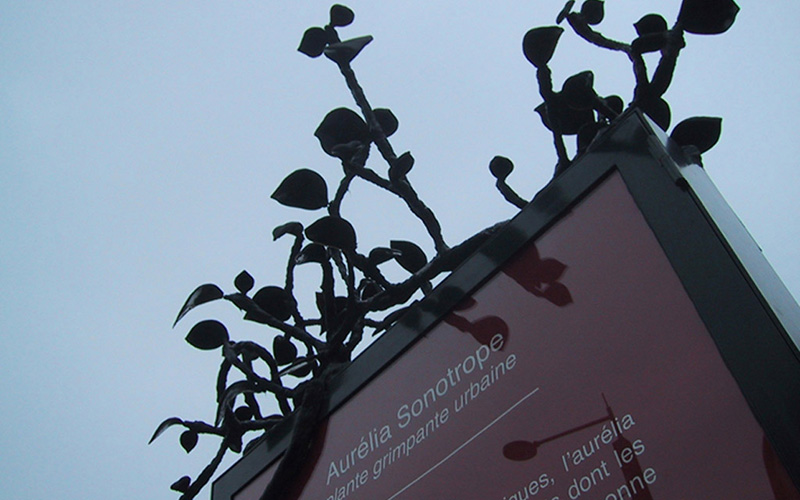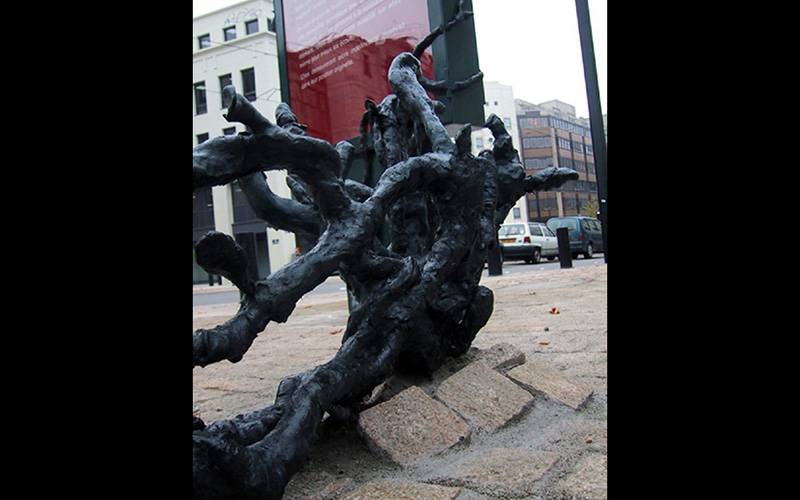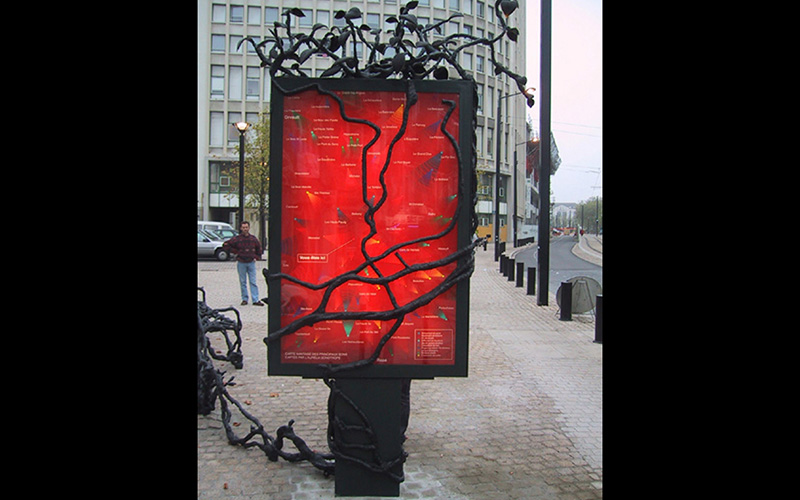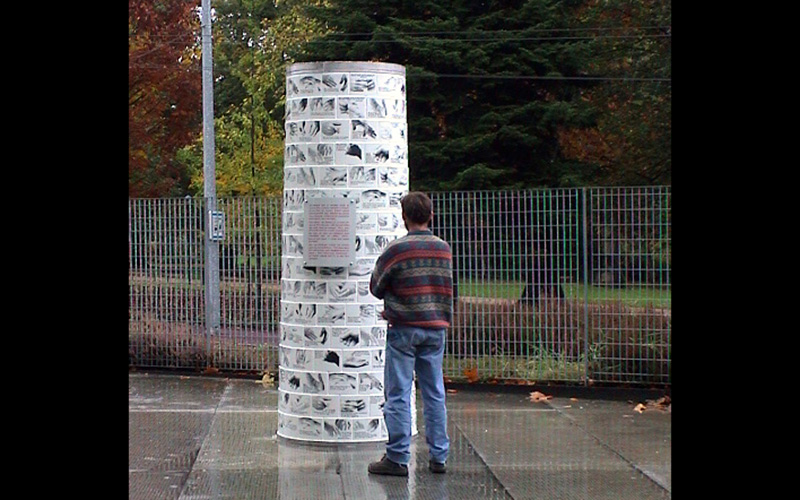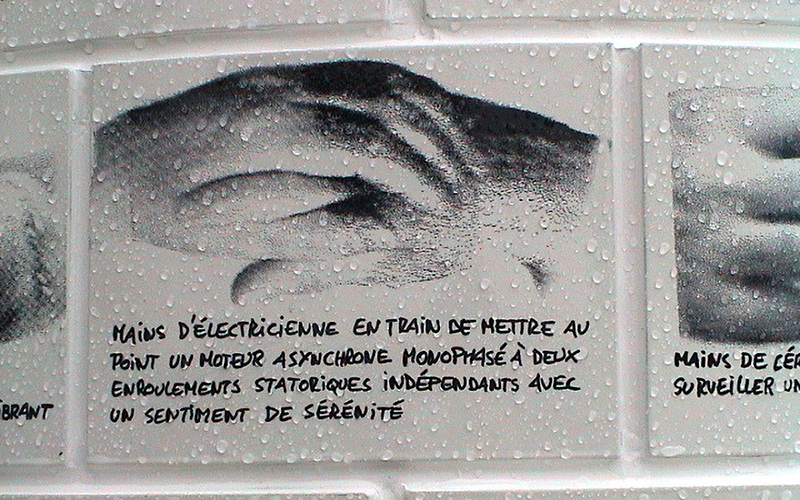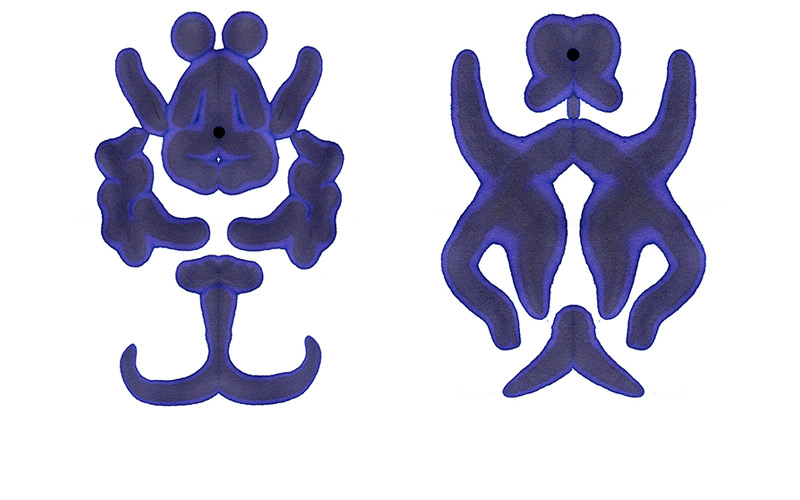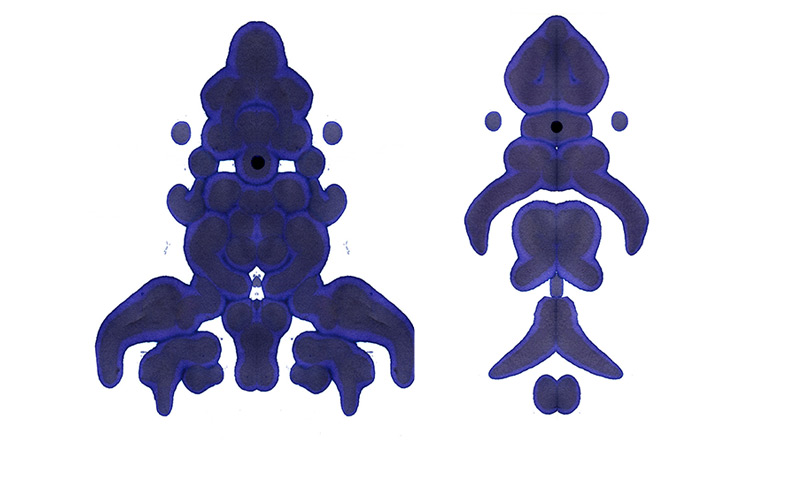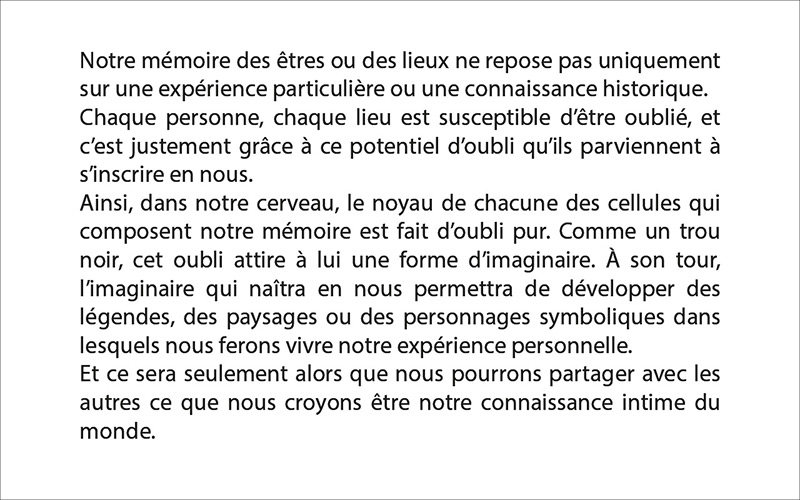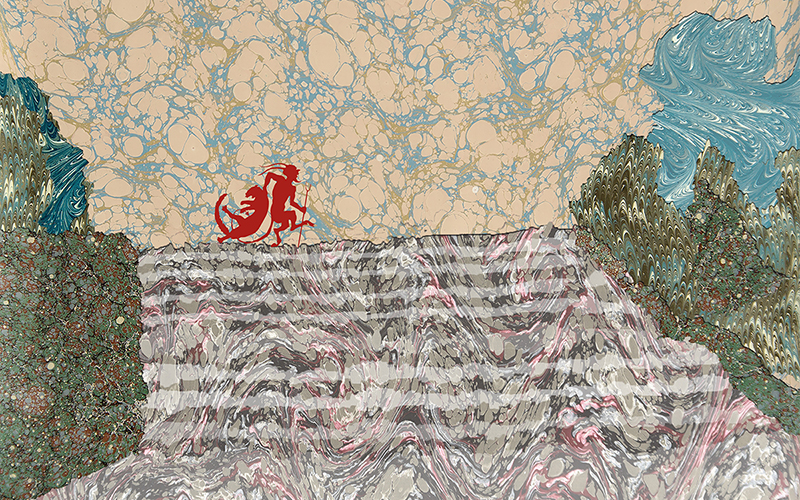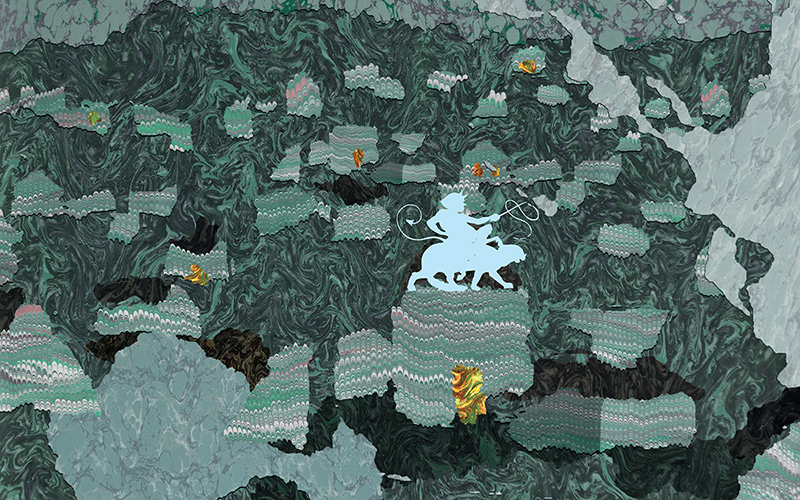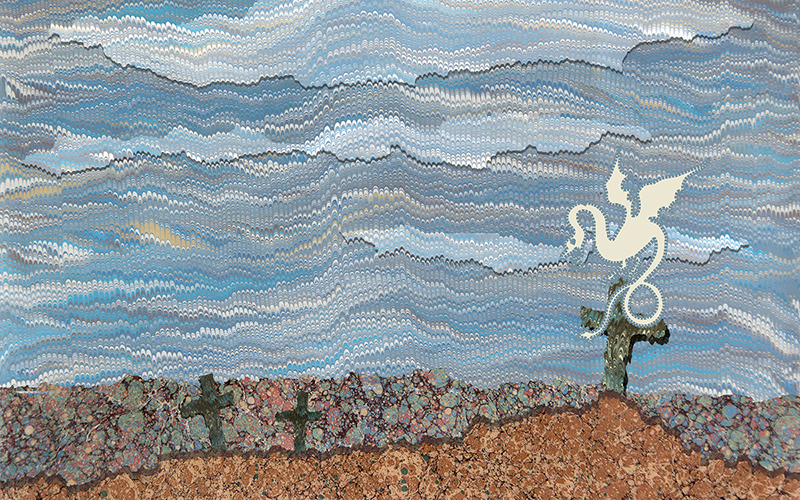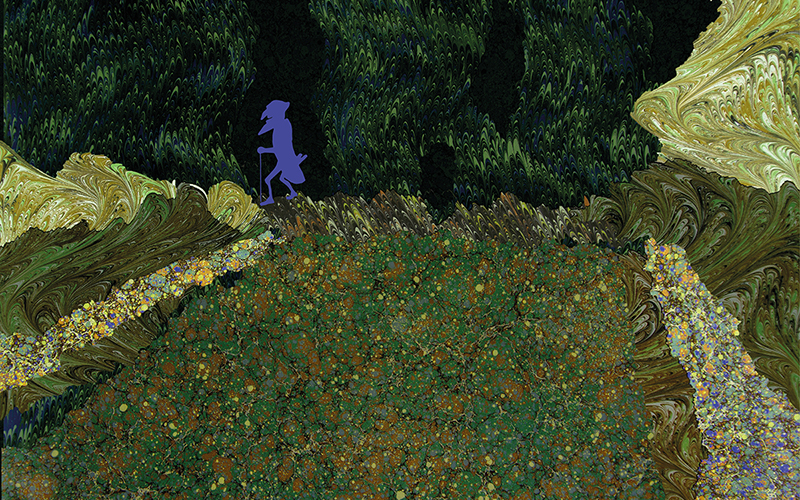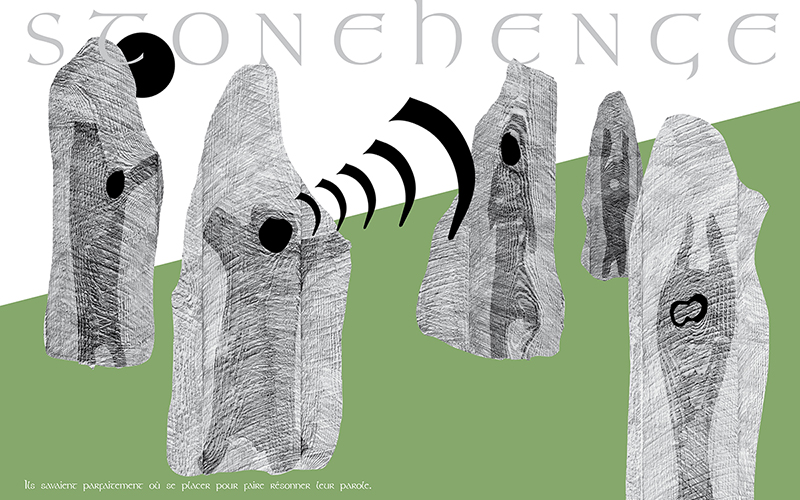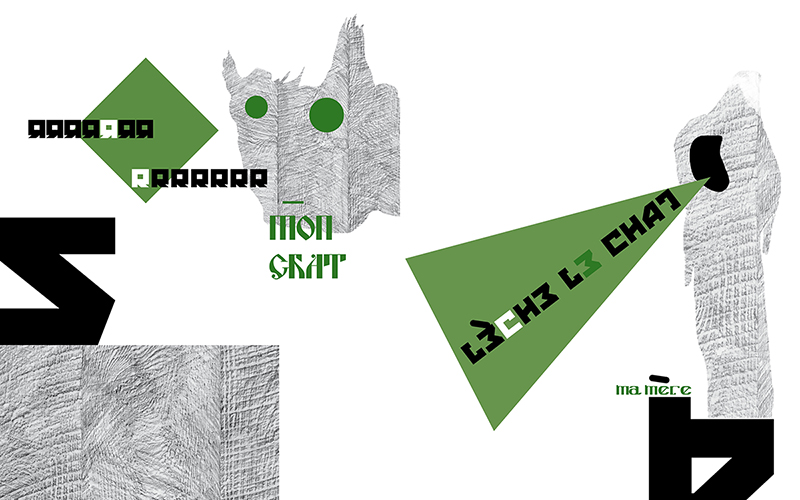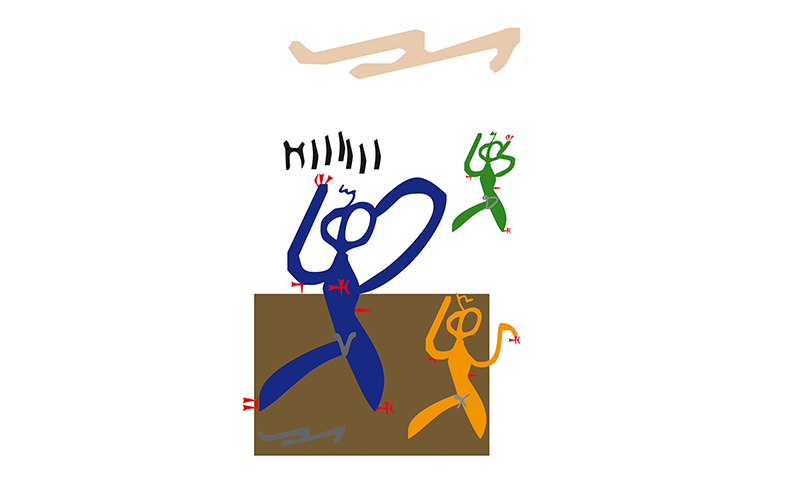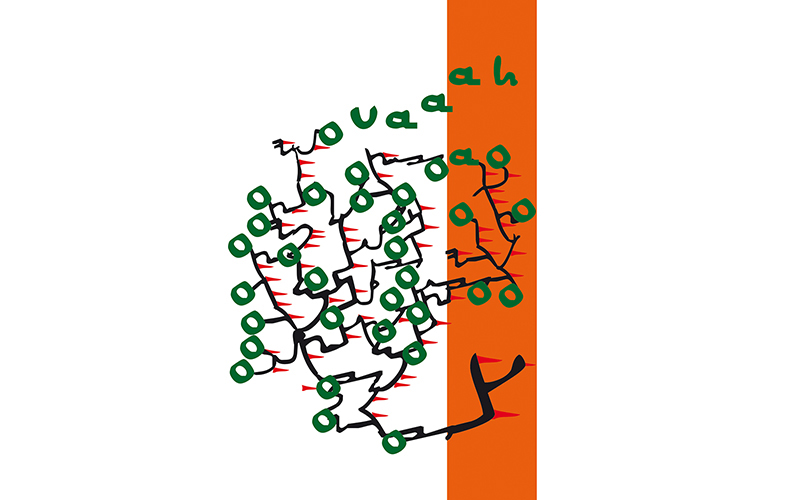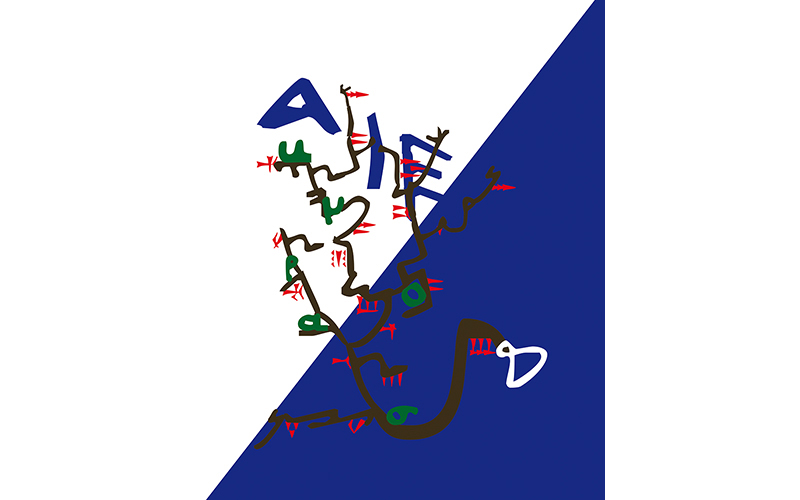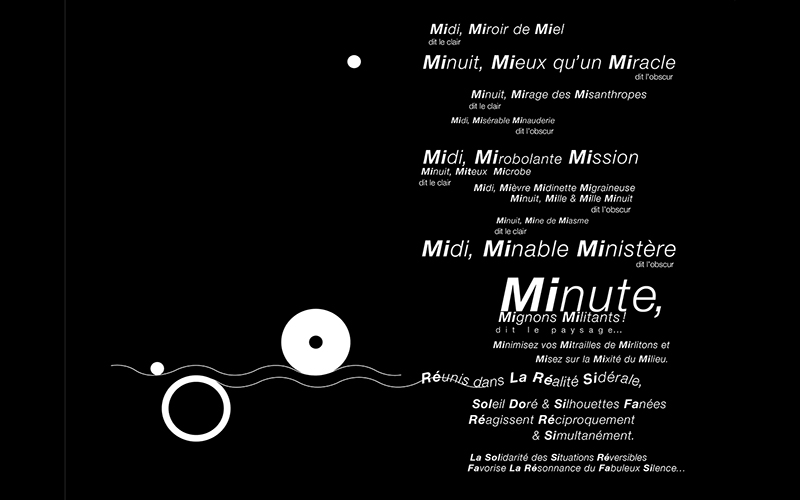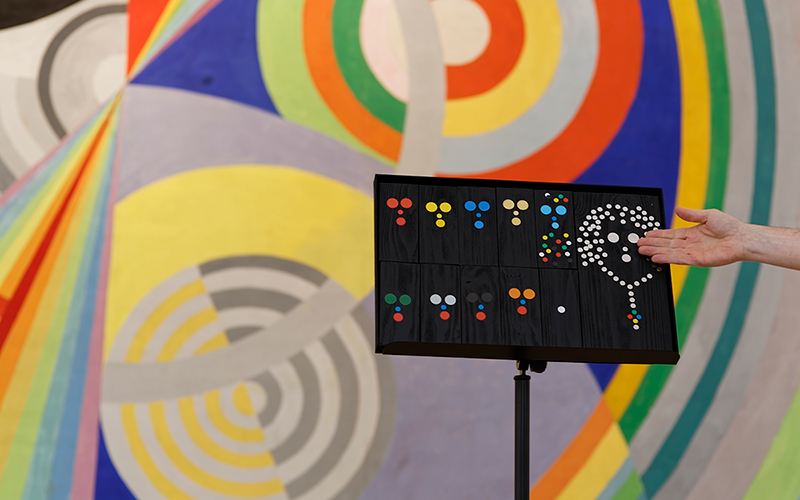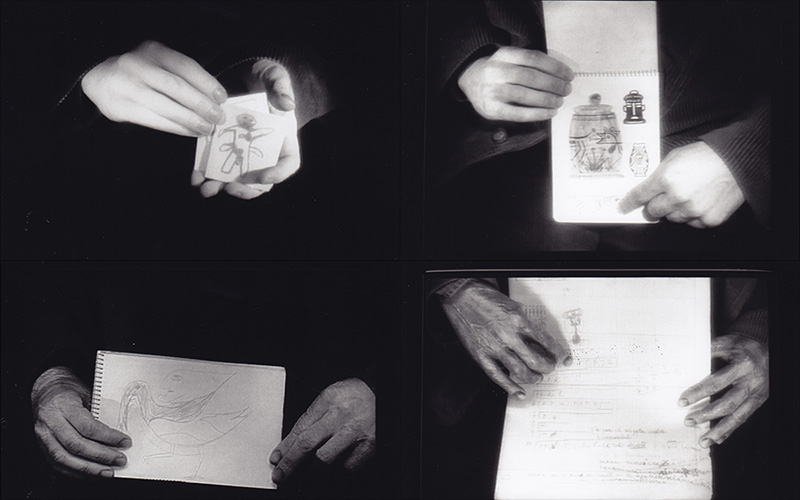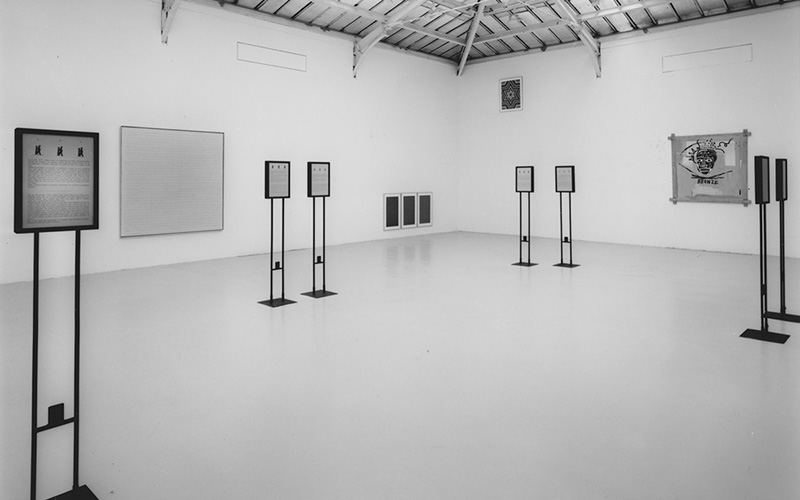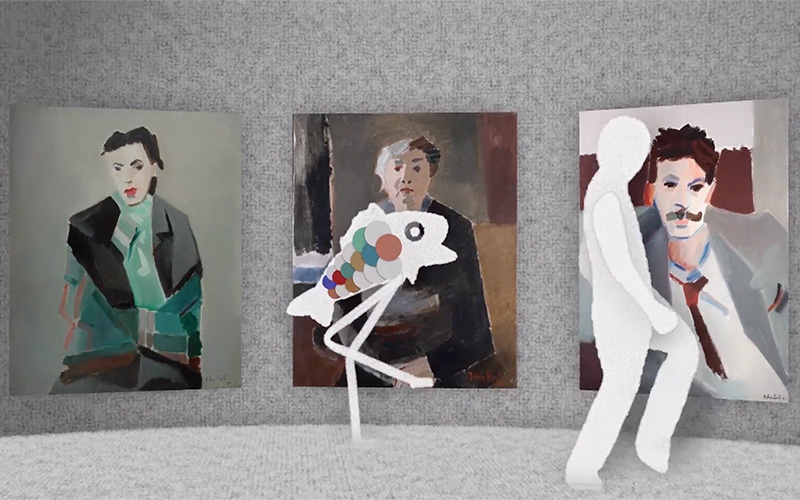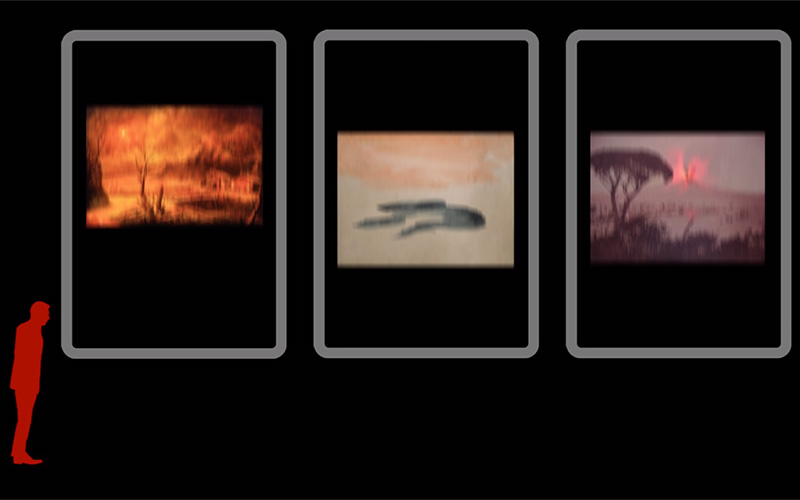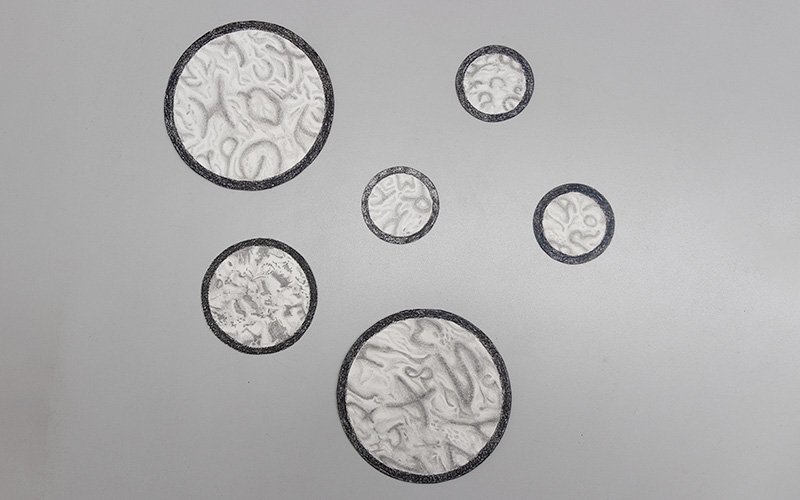Patrick Corillon’s objects – which one could very well come across in a museum of folklore or a conceptual art exhibition – stand out for their desire to convey, as simply as possible, stories that affect individuals and communities, the living and the dead.
On November 6th 1956, Oskar Serti escaped from Budapest in a wooden box. But the smell given off by the sap oozing from the freshly cut planks so reminded him of the forests of his childhood that he suddenly felt inconsolably homesick.
Once over the border, when his friends tried to release him, they saw that he was so firmly stuck to his box that they were going to need knives to free the soles of his shoes, which had become glued to the resin.
On May the 5th 1907, the sculptor Baptiste D... conceived a Venus in stone whose forms were to be exclusively cut by the single force of cleverly canalised jets of water.
But at the unveiling on June the second 1910, the water was cut off to discover the goddess rising out of the waves and the officials deemed her to be so improper that they decided to immerse her again until she recovered a more decent appearance.
On the 14th of February 1931, when he heard above him the thud of the famous meteorite which was destined to strike this bathroom, Oskar Serti had the feeling that he was going to be its victim.
Surrendering, his last thought was for Catherine de Sélys, whom he had bastardly abandoned five years earlier.
The sudden reminder, at this fatal moment, of his deplorable behaviour vis à vis the poor Catherine, rekindled in him such a sentiment of disgust, that a violent jolt of self-repulsion ran through him and miraculously whisked him away from the danger.
A few installations |
inside |
A few installations |
outside |
A few works on paper |
Some dialogues with collections |
Some open-air books |
The ocuicole is an endoparasite which — although it can survive on its own — is continually disturbed by the fear of going short. Once it can get inside a human organism, it tries to absorb each and every cell of our body; but it doesn’t need all these cells, and so will immediately bring them up a little further on. In this way, after being rejected by the ocuicole, every cell in our body without exception is going to be moved the tiniest distance, far enough however to give us the overall impression of being no more than a memory of our former selves.
From then on, nothing we do will directly concern us, but will be done on behalf of the person we used to be.
Archives
